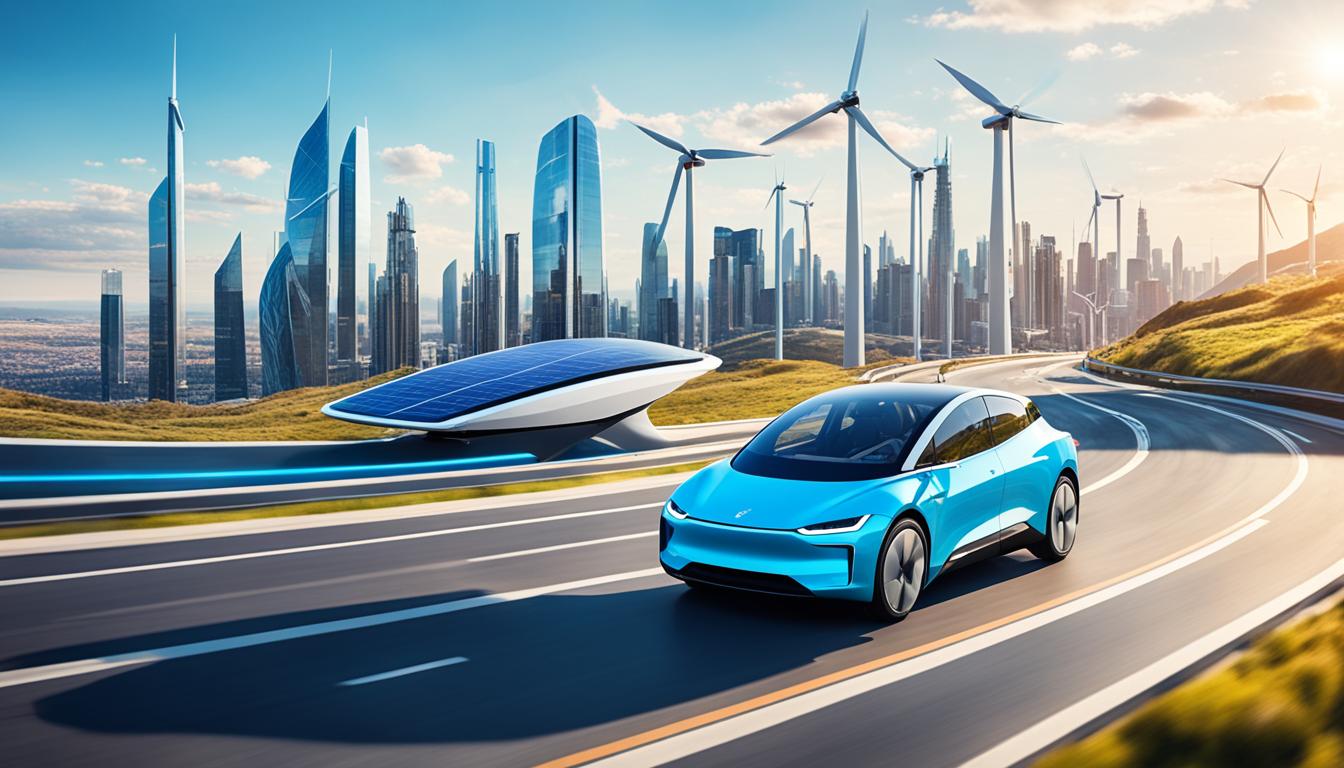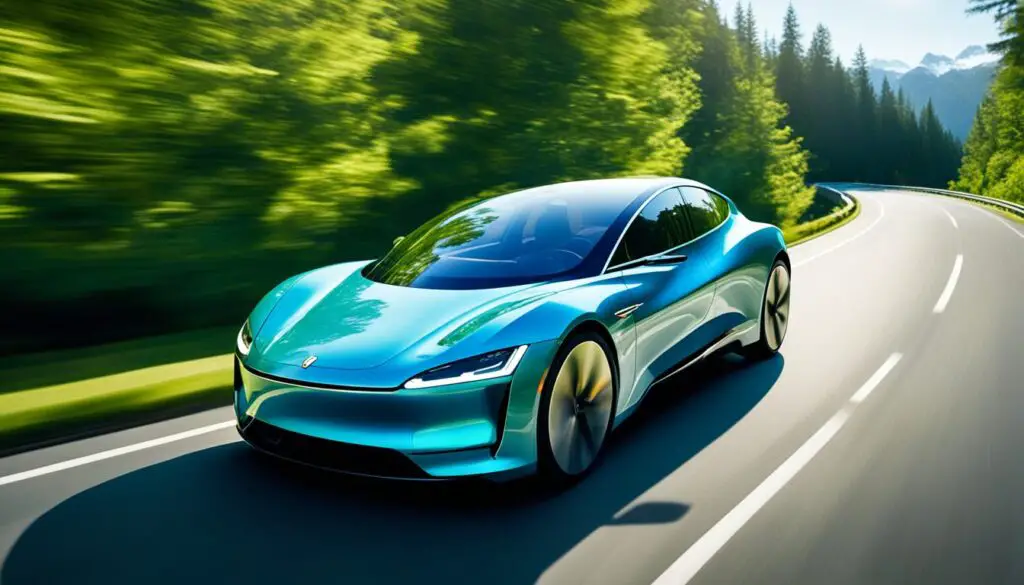
Extending Your Reach: Electric Vehicle Range Extension Innovations
Electric vehicle range extension is a topic that is gaining significant traction in the automotive industry. With advancements in technology, innovative solutions are being developed to address the limitations of electric vehicle range. In this section, I will explore some of the latest and most promising innovations in electric vehicle range extension.
One of the key areas of focus in this field is battery technology. Breakthroughs in battery technology have played a crucial role in extending the range of electric vehicles. Lithium-ion batteries, which are commonly used in electric vehicles, have seen significant improvements in energy density and performance, enabling electric vehicles to travel longer distances on a single charge. Additionally, researchers are experimenting with new battery chemistries, such as solid-state batteries, which have the potential to further increase the range and reduce charging times.
Another innovation that has contributed to the extension of electric vehicle range is regenerative braking systems. These systems capture and store energy that is typically lost during braking and deceleration, and then use it to recharge the vehicle’s battery. By harnessing this otherwise wasted energy, regenerative braking systems increase the overall efficiency of electric vehicles and help extend their range.
In order to support the increasing adoption of electric vehicles and alleviate range anxiety, the development of fast-charging networks is crucial. Fast chargers, also known as DC fast chargers, can charge an electric vehicle’s battery much quicker than traditional chargers, making long-distance travel more convenient. Companies are investing in building robust charging infrastructure to meet the growing demand for electric vehicles.
Key Takeaways:
- Battery technology advancements have significantly improved the range of electric vehicles.
- Regenerative braking systems capture and store energy to recharge electric vehicle batteries.
- Fast-charging networks are crucial for long-distance electric vehicle travel.
- Lithium-ion batteries and solid-state batteries are among the key advancements in battery technology.
- Investments in charging infrastructure are essential for supporting the growing demand for electric vehicles.
Breakthroughs in Battery Technology
Recent advancements in battery technology have revolutionized the electric vehicle industry, significantly enhancing the range and performance of these eco-friendly vehicles. Today, lithium-ion batteries serve as the primary power source for electric vehicles, benefiting from substantial improvements in energy density and overall efficiency.
With enhanced energy density, electric vehicles equipped with lithium-ion batteries can cover longer distances on a single charge, providing drivers with increased convenience and eliminating range anxiety. These breakthroughs in battery technology have played a pivotal role in reshaping the landscape of sustainable transportation.
However, the quest for further innovation in battery technology continues. Researchers are actively exploring alternative battery chemistries, such as solid-state batteries, to unlock even more significant advancements. Solid-state batteries have garnered particular attention due to their potential to offer higher energy densities, faster charging times, and improved safety compared to traditional lithium-ion batteries. By replacing the liquid electrolyte with a solid-state electrolyte, solid-state batteries eliminate the risks associated with leaks, fires, and explosions.
“Solid-state batteries have the potential to be a game-changer in the electric vehicle industry,” says Dr. Mary Johnson, a renowned battery researcher at TechPower Inc. 
“By harnessing the unique qualities of solid-state batteries, we can overcome the limitations of current lithium-ion technology and unlock a new era of electric vehicles with extended ranges and shorter charging times.”
The integration of solid-state batteries into the automotive industry, however, still faces several challenges. While solid-state batteries have demonstrated promising results in lab settings, scaling up production and achieving cost-effective manufacturing processes remains a top priority for researchers and manufacturers alike.
Comparing Battery Technologies
| Battery Type | Energy Density | Charging Time | Safety |
|---|---|---|---|
| Lithium-ion | High | Several hours | Requires careful handling |
| Solid-state | Potential for higher energy density | Potential for significantly faster charging | Improved safety |
As shown in the table above, solid-state batteries possess the potential to outperform traditional lithium-ion batteries in energy density, charging time, and safety. However, further research and development are necessary to optimize solid-state battery technology and ensure its scalability and affordability.
The breakthroughs in battery technology, both in improving lithium-ion batteries and the exploration of solid-state alternatives, are crucial for extending the reach of electric vehicles and accelerating the transition towards sustainable transportation.
Regenerative Braking Systems
Regenerative braking systems are an essential innovation in electric vehicle range extension. These systems harness the power of braking and deceleration to capture and store energy that would typically be lost. By converting this energy into usable power, regenerative braking systems help recharge the vehicle’s battery and increase overall efficiency. As a result, electric vehicles can travel longer distances and maximize their range.
When a driver applies the brakes, the regenerative braking system engages by using the motor to slow down the vehicle and convert the kinetic energy into electrical energy. This energy is then stored in the battery for future use. By capitalizing on the wasted energy during braking, regenerative braking systems contribute to a more sustainable and eco-friendly driving experience.
One of the key advantages of regenerative braking systems is their ability to improve the overall range of electric vehicles. By recycling energy that would otherwise be dissipated as heat, these systems increase the efficiency of the vehicle’s powertrain. Additionally, regenerative braking systems help reduce wear and tear on the traditional brake pads, leading to longer-lasting brakes and reduced maintenance costs.
The Science Behind Regenerative Braking
Regenerative braking systems function based on the principle of electromagnetic induction. As the vehicle slows down, the motor acts as a generator and produces electricity by converting mechanical energy into electrical energy. This electrical energy is then fed back into the battery, effectively replenishing the stored power.
This process occurs through a series of intricate components, including the electric motor, power electronics, and the battery. When the driver applies the brakes, the electric motor switches from propulsion mode to generator mode, converting the kinetic energy into electrical energy. The power electronics control the flow of electricity, directing it to the battery for storage.
Regenerative braking systems can be programmed to operate at varying levels of intensity, allowing drivers to choose between different levels of regenerative braking force. Some vehicles even offer regenerative braking modes that prioritize energy regeneration to enhance range, particularly in stop-and-go traffic or city driving conditions.
Regenerative braking systems have revolutionized the efficiency and range of electric vehicles. By harnessing the power of braking, these systems transform wasted energy into usable power, making electric vehicles more practical and sustainable.
The Impact of Regenerative Braking Systems
Regenerative braking systems have become a standard feature in many electric vehicles and have played a significant role in driving the adoption of electric mobility. With advancements in technology, these systems continue to improve, offering higher levels of energy recovery and increased efficiency.
Beyond extending the range of electric vehicles, regenerative braking systems also contribute to a smoother and more controlled driving experience. The regenerative braking force helps slow down the vehicle gradually, reducing the reliance on traditional friction brakes and enhancing overall safety.
Moreover, by reducing the reliance on external charging, regenerative braking systems offer an added convenience factor. Drivers can take advantage of the energy generated during daily commutes and city driving, making their overall driving experience more efficient and hassle-free.
| Benefits of Regenerative Braking Systems | Challenges of Regenerative Braking Systems |
|---|---|
|
|
While regenerative braking systems offer numerous benefits, they also come with their own set of challenges. Extreme weather conditions, such as very low temperatures, can impact the effectiveness of regenerative braking systems. Moreover, integrating these systems into existing vehicle architectures can be complex and require significant engineering expertise.
Despite these challenges, the widespread adoption of regenerative braking systems in electric vehicles demonstrates their value in extending range and increasing energy efficiency. As technology continues to evolve, regenerative braking systems will play an integral role in shaping the future of electric mobility.

Fast-Charging Networks
The development of fast-charging networks is crucial for electric vehicle range extension. Fast chargers, also known as DC fast chargers, can charge an electric vehicle’s battery much quicker than traditional chargers. This allows drivers to recharge their vehicles in a matter of minutes rather than hours, making long-distance travel more convenient.
The expansion of fast-charging networks across the country is essential for increasing the adoption of electric vehicles and alleviating range anxiety. With a comprehensive network of fast chargers, electric vehicle owners can have peace of mind knowing that they can quickly and easily recharge their vehicles during their journey.
Companies are investing in building robust charging infrastructure to support the growing demand for electric vehicles. They are partnering with government entities, utilities, and other stakeholders to establish fast-charging networks along major highways, in urban areas, and at popular destinations. This widespread availability of fast chargers is crucial for accommodating the increasing number of electric vehicles on the roads.
Fast-charging networks are not only beneficial for electric vehicle owners but also play a significant role in reducing greenhouse gas emissions and improving air quality. By making it easier and more efficient to charge electric vehicles, these networks encourage the transition from fossil fuel-powered vehicles to cleaner and more sustainable transportation options.
FAQ
How do advancements in battery technology extend the range of electric vehicles?
Advancements in battery technology, such as improvements in energy density and performance of lithium-ion batteries, allow electric vehicles to travel longer distances on a single charge. Additionally, the development of new battery chemistries, like solid-state batteries, has the potential to further increase range and reduce charging times.
What are regenerative braking systems and how do they contribute to extending the range of electric vehicles?
Regenerative braking systems capture and store energy that is typically lost during braking and deceleration, and then use it to recharge the vehicle’s battery. By harnessing this otherwise wasted energy, electric vehicles can increase their overall efficiency and extend their range. Regenerative braking systems have become a standard feature in many electric vehicles and are an essential component in maximizing range.
Why are fast-charging networks important for electric vehicle range extension?
Fast-charging networks, also known as DC fast chargers, can charge an electric vehicle’s battery much quicker than traditional chargers. This enables drivers to recharge their vehicles in a matter of minutes, making long-distance travel more convenient. The expansion of fast-charging networks nationwide is crucial for increasing the adoption of electric vehicles and alleviating range anxiety.
